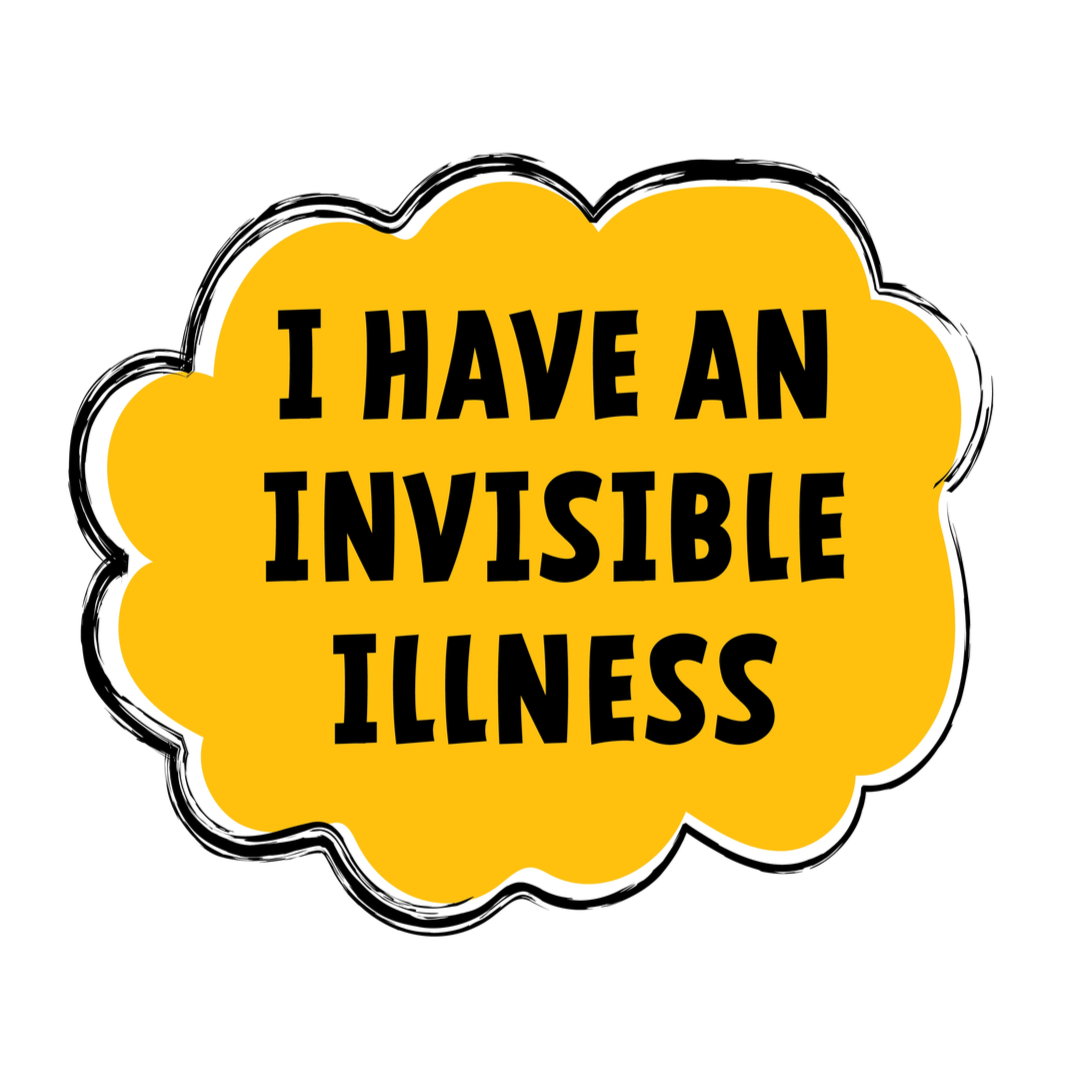It's estimated that 3 to 26 million Americans live with an invisible illness. These invisible illnesses are chronic health conditions without visible signs, often leaving people misunderstood and unsupported. Many invisible illnesses are also chronic illnesses, meaning they persist over time and can significantly impact daily life.
From chronic fatigue syndrome to autoimmune diseases and cognitive disorders, invisible illnesses quietly shape the lives of millions. At Daiwa Health Development we believe shining a light on these conditions and offering solutions that support the body's natural systems creates a path to better health and wellbeing. Focusing on overall well being is essential for those living with invisible illnesses, as it supports both mental and physical health.
What is an Invisible Illness?
An invisible illness, sometimes called an invisible disability, is a medical condition that can't be seen but still causes symptoms.
Unlike visible disabilities such as mobility impairments, invisible illnesses often present with fatigue, chronic pain or cognitive issues that are hard for others to recognize. A person may look perfectly healthy while struggling with debilitating pain, unable to complete school work or keep up with friends and co-workers. Many people with invisible illnesses may be considered disabled, even though they do not appear physically disabled. It is also common for someone with an invisible illness to seem healthy to others, even though they are actually sick and dealing with significant symptoms.
Many invisible illnesses are autoimmune diseases where the immune system attacks healthy cells. Others may be mental health disorders such as depression, obsessive compulsive disorder or cognitive disorders like dementia.
Respiratory conditions, inflammatory bowel disease, diabetes and heart failure are also examples of chronic illnesses that can be unseen yet life altering.
Most Common Conditions
Invisible illnesses include a wide range of disorders. Chronic fatigue syndrome affects nearly 2.5 million Americans, producing exhaustion, muscle pain, headaches, trouble thinking and sleep disruptions. These are just a few examples of the many different conditions that fall under the umbrella of invisible illnesses, each with unique symptoms and challenges.
Fibromyalgia is another condition marked by widespread debilitating pain and fatigue, often paired with mental health challenges such as depression or anxiety. Crohn's disease and other forms of inflammatory bowel disease silently damage the small intestine yet outwardly the person may appear healthy.
Rheumatoid arthritis, lupus and Sjogren's syndrome are autoimmune diseases that attack joints, tissues and glands, often leaving people struggling with mobility, vision issues or dryness while looking unaffected to others. Many of these invisible illnesses are physical illnesses, not just mental health conditions, and can be misunderstood or overlooked because their symptoms are not always visible.
Neurological disorders like dementia or cognitive disorders can cause memory lapses, mood changes and functional decline. Each condition may present differently but they share one reality: symptoms that impact life but are invisible. Support and management strategies may need to be tailored to specific conditions to address the unique needs of each individual.
Myths That Harm More Than Help
Unfortunately people with invisible illnesses face stigma. Some assume these conditions aren't real or the person isn't trying hard enough. Others say it's “all in your head” or a lifestyle choice. These myths add emotional harm on top of physical symptoms and leave people struggling with depression, anxiety or feeling misunderstood.
Medical costs compound the burden as people with invisible illnesses often require repeated visits to healthcare providers, multiple tests and ongoing treatment.
A simple blood test rarely gives clear answers. Diagnosis can take years, leaving people frustrated more health challenges. There are often significant difficulties in diagnosing invisible illnesses, as symptoms may be hard to identify and require extensive testing and specialist understanding.
Believing the myth that invisible illnesses aren't “real” can prevent a friend, family member, or co-worker from offering much needed support. It's crucial to understand these conditions as valid medical issues with measurable impact on quality of life (qual life res and int j qual stud confirm this). People with invisible illnesses need to feel supported by those around them, as this validation and assistance can make a significant difference in their well-being.
Diagnosing Invisible Illnesses
Diagnosing invisible illnesses is often a journey filled with uncertainty and frustration. Unlike conditions with obvious physical symptoms, many invisible illnesses—such as chronic fatigue syndrome, mental health disorders, autoimmune diseases, and cognitive disorders—do not reveal themselves through immediately apparent signs. This complexity makes it challenging for healthcare providers to pinpoint the exact cause of a person's struggles. The average diagnosis period for conditions like fibromyalgia can take roughly 6.5 years from when symptoms first present to when an official diagnosis is made.
For many people with invisible illnesses, the path to diagnosis begins with a detailed medical history and a thorough physical examination. Healthcare providers may order laboratory tests or imaging studies, but a simple blood test rarely provides all the answers. Conditions like fibromyalgia and chronic fatigue syndrome, for example, are diagnosed primarily based on a person's symptoms and medical history, rather than a single definitive test. Similarly, mental health conditions and cognitive disorders can present themselves with overlapping symptoms, making it difficult to distinguish between different health conditions.
Because many invisible illnesses—such as chronic pain, inflammatory bowel disease, and rheumatoid arthritis—share symptoms like fatigue, pain, and trouble thinking, the diagnostic process often requires patience and persistence. Healthcare providers may use questionnaires to assess the impact of symptoms on daily life, and sometimes refer patients to specialists, such as rheumatologists or psychiatrists, for further evaluation.
For people living with invisible illnesses, being proactive is essential. Keeping a detailed symptom journal, seeking multiple medical opinions, and openly communicating with healthcare providers can help ensure that nothing is overlooked. Support groups and online resources can also be invaluable, offering information, encouragement, and a sense of community for those navigating the diagnostic process.
Invisible illnesses can have a profound impact on daily life, making even simple tasks feel overwhelming. People may need accommodations at work or school, or even assistive devices, to manage their condition. The emotional toll can be significant as well, with many experiencing depression, anxiety, or other mental health challenges as a result of ongoing pain and fatigue.
The spoon theory, created by Christine Miserandino, is a powerful way to explain the limited energy people with invisible illnesses have each day. According to this metaphor, every activity—no matter how small—uses up a “spoon” of energy, and once those spoons are gone, there's nothing left to give. This analogy helps family members, friends, and healthcare providers better understand the daily challenges faced by people with invisible illnesses and the importance of support and understanding.
Ultimately, diagnosing invisible illnesses requires a comprehensive, compassionate approach that considers the whole person—their symptoms, history, and unique challenges. With awareness, advocacy, and the right resources, people with invisible illnesses can work toward an accurate diagnosis and find strategies to improve their quality of life.
The Daily Struggle
Imagine waking up each day knowing that the people around you can't see the struggles you face. Living with an invisible illness means facing limitations that others can't see. Fatigue can be so severe that even daily activities like cooking or school work become overwhelming. The ongoing challenge of managing unpredictable symptoms and persistent pain can feel relentless and interfere with relationships, careers and social lives. To support a loved one with an invisible illness, listen without judgment, believe them, and be patient and flexible with plans.
People with these conditions often describe using “spoon theory” which illustrates how they start each day with a limited number of energy units (spoons) and must ration them carefully. Respecting the limits of individuals suffering from chronic illnesses is crucial; this includes understanding the need to change or cancel plans.
Invisible illnesses also create isolation. Friends may not understand why social invitations are declined. Co-workers may assume the person is unreliable. Even family members can misinterpret the situation. This feeling of being misunderstood deepens the mental health impact and lowers overall wellbeing. Invisible illnesses can lead to social impacts, including a reduction in social support and a lower quality of life.
Invisible Illness at Work and School
One of the greatest challenges is that invisible illnesses don't pause when a person has professional or academic responsibilities. Someone may push through chronic fatigue to finish school work, only to collapse from exhaustion later. Others may fight through debilitating pain just to appear dependable at their jobs. Employers and educators often have limited awareness, leading to lack of accommodations.
Pro Tip: Employers and schools can support people with invisible disabilities by offering flexible scheduling, remote work options, and understanding that fatigue and symptoms fluctuate. These adjustments don't lower performance—they create an environment where people can thrive.
Living with Chronic Fatigue
Chronic fatigue is more than being tired after a long day. It is a symptom that drains life of its energy and leaves people struggling to function. For some, even walking up a flight of stairs can lead to hours of recovery. Chronic fatigue syndrome not only causes exhaustion but also sleep problems, trouble thinking, and widespread pain.
This condition highlights why invisible illnesses can be so difficult. People with invisible illnesses may look perfectly healthy, yet the reality is very different. Understanding the difference between normal tiredness and chronic fatigue is key to offering support. It is important to believe someone with an invisible illness when they say they do not feel good.
The Role of Diet and Gut Health
For many invisible illnesses, diet and gut health play a major role. Autoimmune diseases, Crohn's disease, and inflammatory bowel disease all involve the small intestine and immune system function. Nutrition, inflammation, and gut balance directly affect symptoms.
Supplements that strengthen the immune system, ~reduce~ manage inflammation, and support brain and gut health can be powerful tools alongside medical treatment. At , we design natural products that support cellular repair and overall health, helping people struggling with invisible illnesses find more balance.
Mental Health Connections
Mental health conditions often accompany invisible illnesses. Depression, anxiety, and cognitive disorders such as dementia or obsessive compulsive disorder are deeply tied to physical symptoms. The constant struggle with pain, fatigue, and difficulty functioning adds stress that compounds emotional health. Many individuals with invisible illnesses experience bouts of depression and anxiety due to their chronic conditions, leading to isolation.
Support groups and therapy play an important role in helping people with invisible illnesses manage the mental health side of their conditions. Friends and family members can also provide support by listening, asking thoughtful questions, and avoiding judgment. It is important to offer specific, practical assistance such as running errands or providing a meal instead of giving unsolicited advice.
Support and Solutions
Support makes all the difference for people with invisible illnesses. Listening without judgment, being patient and validating their symptoms can help them feel less alone. Support groups whether in person or online connect people who share the same challenges and provide strength through shared experience. Healthcare providers who recognize invisible disabilities as legitimate conditions can help patients find management strategies and reduce stigma. Talking to friends and family about an invisible illness can alleviate emotional pain.
At Daiwa Health Development we recognize that chronic conditions often involve systemic inflammation, immune system imbalance and nutritional gaps. Supplements that support cellular health and manage inflammation can complement medical treatment and overall wellbeing.
Science and Compassion
Invisible illnesses are not uncommon; they affect millions of people. People live with chronic pain, fatigue and disorders that don't show on the outside. Autoimmune diseases, diabetes, cognitive disorders and many invisible illnesses need more understanding and support from society. It is estimated that invisible illnesses affect about 10% of the American population, especially among women.
Diagnosis is rarely straightforward and while some medical conditions can be tracked with a simple blood test, most require persistence and collaboration with healthcare providers. That's why supporting the immune system, gut and brain health and addressing fatigue holistically are key steps forward.
By focusing on lifestyle changes, nutritional support and compassionate care people with invisible illnesses can improve quality of life and protect their long term health. Daiwa Health Development is proud to offer natural supplements that address inflammation management, strengthen the immune system and help restore balance for people with invisible conditions.
The Future
Invisible illnesses may be unseen but their impact on lives, families and communities is real. By rejecting myths, offering support and embracing holistic health solutions we can change the way society responds to these conditions.
At Daiwa Health Development our mission is to create products backed by science that support people with invisible illnesses to regain strength, stability and wellbeing. Because even when illness is invisible healing should always be within reach.








Leave a comment
All comments are moderated before being published.
This site is protected by hCaptcha and the hCaptcha Privacy Policy and Terms of Service apply.